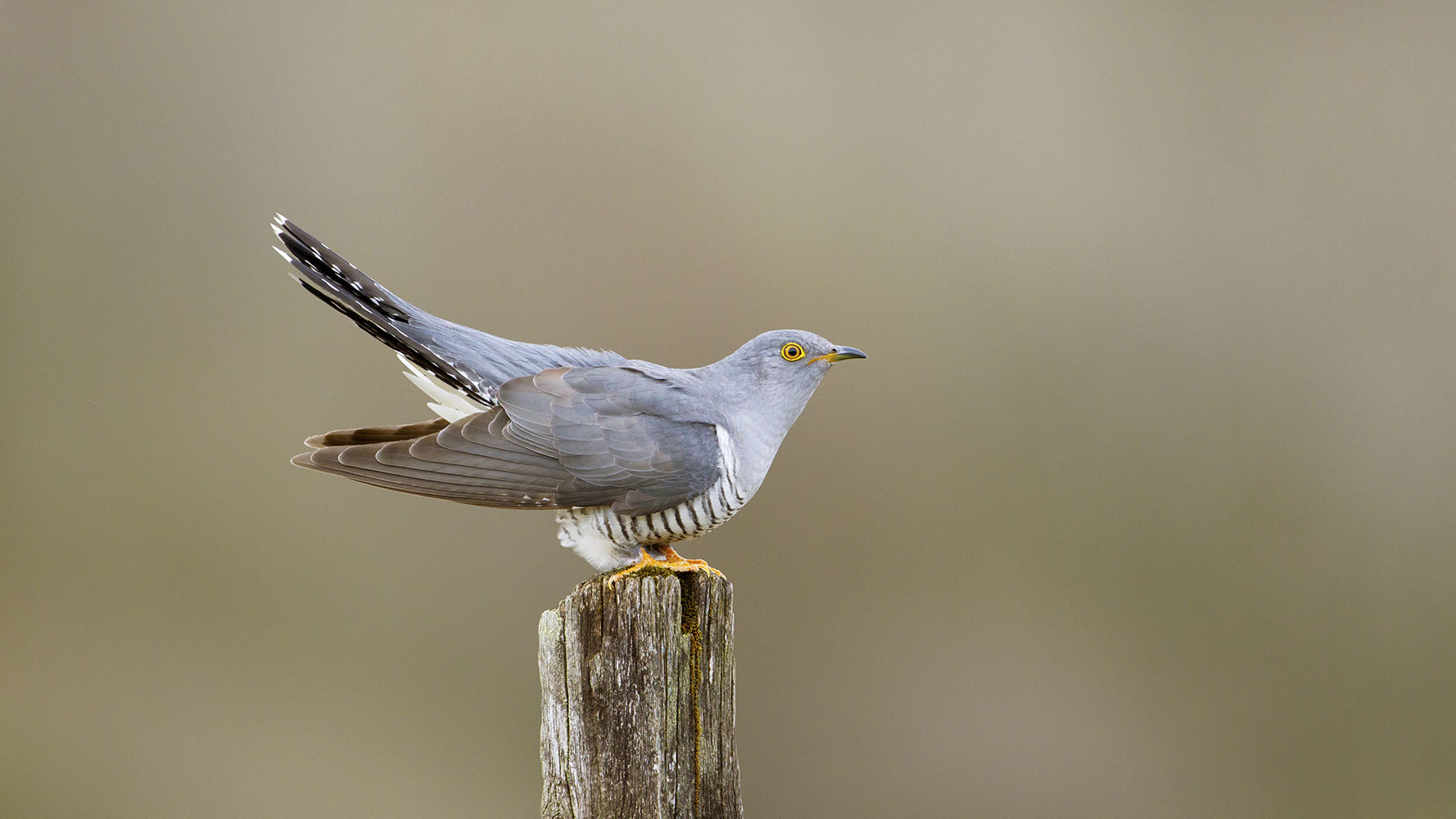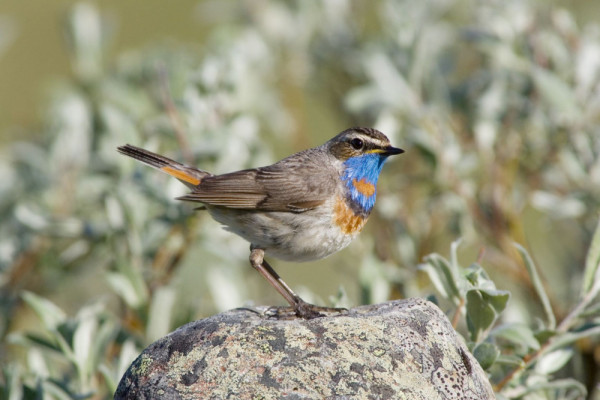
Migration blog (16th – 22nd April )
1 commentWith winter seeming reluctant to let go and the early spring period for many being on the cold side, with snow and widespread frosts, signs of spring still continue to appear.
The last four weeks have seen a slow but steady shift from late winter into early spring. Cold weather has certainly made it difficult to remember this is spring, not autumn, but it is important to remember it is still early. Once temperatures warm up, more and more birds will arrive for the summer. That being said, there has already been a steady arrival of summer migrants with Swallow, Sand Martin, Wheatear, Sedge Warbler and Yellow Wagtail arriving and being reported widely across Britain and Ireland. The colder weather at the end of March and into early April resulted in species like Swallow and Sand Martin forming large flocks over waterbodies as they searched for insects to feed on. For example, 5000 Sand Martins were recorded over Topsham recreational fields in Devon on the 10th April, and some other sites also recorded four-figure counts. The first Cuckoo, Nightingale and Hobby of the year arrived in late March and reports continued to build throughout April as more birds battled against the northerly wind to make it here. The colder northerly winds resulted in the early spring migration being a steady flow of arrivals as the instinct to migrate still pushed birds northwards, albeit in lower numbers than in warmer springs. Light northerly winds can still result in good arrivals of migrants and ‘falls’ of birds can still happen as birds make landfall and seek out food and shelter before moving northwards. 130 Willow Warblers were counted on Bardsey on the 30th of March and over 400 were recorded at Portland on the 13th of April. As is common during spring migration, many of these new arrivals only stayed for a day or two before moving off, the urge to establish a territory and attract a mate pulling them towards their breeding grounds. Several Pied Flycatchers were seen and back on territories slightly early in some places, and soon began singing and investigating nest holes.
Auks arrived in increasing numbers at their breeding cliffs around the coast of Britain and Ireland with a staggering 80,000+ Razorbills reported past Flamborough on the 8th of April. Let's hope this year proves to be a successful year for this species and other seabirds, many of which are facing declines in their population. A period of strong winds on the 6th of April resulted in 55 Kittiwake arriving for a short time at Hilfield Reservoir on the outskirts of London; a prized species for many inland patch watchers and single birds were also noted at other inland locations.
There were still some lingering winter species with a few white-winged gulls reported. Both Iceland and Glaucous Gulls remain at favoured wintering spots; these will most likely move on during the next couple of weeks and head back towards the Arctic Circle for the summer. Species such as Bewick’s and Whooper Swan have all but left now and Brent, Pink-footed and White-fronted Geese will not be far behind them as they leave Britain and Ireland during April to breeding areas across northern Europe and Greenland.
A few scarcities also arrived over the past few weeks. Pick of the bunch for many, however, was the Northern Mockingbird that was found in Devon last year, and that stayed long enough for many people to travel and see it once restrictions were eased. The bird was last seen in its usual garden on the 7th of April but was remarkably found the next day on a garden feeder in Pulborough, West Sussex. Other scarcities seen included Eyebrowed Thrush in Kent, Western Subalpine Warbler in Cornwall, White-throated Sparrow In Sussex, Desert Wheatear in Dorset, Pied-billed Grebe in Lancashire, Citrine Wagtail in Northumberland and the Isles of Scilly, and the continued presence of both Belted Kingfisher and Double-crested Cormorant in Ireland.

Species focus - Yellow Wagtail
There are several sub-species of Yellow Wagtail. The one that breeds here in the UK is the sub-species Motacilla flava flavissima, which is also the one that goes by the name Yellow Wagtail. The nominate, M. f. flava, or Blue-headed Wagtail doesn’t breed here but does occur on its migration to and from continental Europe. More recently, Channel Wagtail has become a more frequently found form of Yellow Wagtail here in the UK, and although not exactly a sub-species it is a mix of Blue-headed and Yellow, or flava and flavissima and a sort of washed-out version of both. Already this spring there has been another sub-species found here: the Ashy-headed Wagtail, M. f. cinereocapilla, whose breeding population is found in Italy. Whilst Blue-headed is scarce, the other races are rare here in the UK.
The Yellow Wagtail typically arrives back in the UK during the first half of April, having spent the winter months in sub-Saharan Africa. In recent years it is one of the long-distance migrants that has suffered decline, the breeding population falling by 42% in the last 25 years. The latest breeding population estimate is 19,500 pairs, and although its numbers have fallen it is still one of the spring migrants to look out for, occurring almost anywhere when it is on migration. As a breeding species in the UK, it is very much a bird of the east and can be found from southeast Scotland all the way down the east coast to Kent.
Mid-April sees the peak arrival times for several familiar summer visitors, including Little Ringed Plover, Sand Martin, Willow Warbler, Grasshopper Warbler, Blackcap and Wheatear.
Looking Ahead
The weekend ahead looks mainly settled with high pressure sitting over much of Britain and Ireland, and the winds will be light to moderate and of an easterly or southerly direction. However, these winds aren’t coming from far, so will most likely keep migration at a relatively moderate pace; the light winds don't really affect those species that are on the move. Mid-April sees the peak arrival times for several familiar summer visitors, including Little Ringed Plover, Sand Martin, Willow Warbler, Grasshopper Warbler, Blackcap and Wheatear. Most of these can be found in a variety of locations – not just coastal migrant hotspots – so there is a real possibility of finding one of these species no matter where you live. Whilst we may not think of Song Thrush and Reed Buntings as migrants, both these species do move around in the winter months and can now both be heard, if not seen, as they sing to lay claim to a territory and attract a mate. The Song Thrush can be heard singing in early mornings, joining in with the dawn chorus with its close relative the Blackbird. The Song Thrush's song includes repeated phrases, usually in blocks of two, whilst Reed Buntings tend to sing from atop bushes in or near reedbeds. The majority of summer migrants arriving at this time of year will be birds breeding in Britain and Ireland with those breeding further north, across Scandinavia, passing through in early May.

The early part of next week will see some rain in western parts. The winds for the rest of the country remain light, meaning birds should still arrive. Any migrants encountering bands of rain will likely seek shelter and this could lead to good counts of some species at some sites; this all depends on the timing of the rain. As we progress into the middle of the week, things become more unsettled with more rain and a switch back to stronger winds from a northerly direction, which much like the last couple of weeks will slow the flow of migrants. There will be those species, such as Ring Ouzel and Wheatear, that are used to colder conditions that will continue to arrive.
This time of year can still produce the occasional scarcity and the more settled conditions over the weekend into early next week could produce Hoopoe, Alpine Swift, Red-rumped Swallow, Kentish Plover, Bluethroat, or Subalpine Warbler.
PJ the Cuckoo
Last summer, PJ and three other satellite tagged Cuckoos left the UK for the Congo Basin. PJ was fitted with his tag in June 2016 and if he survived the journey would be a record-breaking Cuckoo, in that he would have been providing information from his tag for a longer period than any other Cuckoo in the BTO Cuckoo project.
At the time of writing PJ has well and truly broken that record, not only making it to his winter location but also surviving the winter and beginning to make his way back to the UK. If he succeeds in doing so, he will have provided information on five whole migrations since BTO scientists began following him!
So, where is he now? On the 12th of April he successfully crossed the Sahara and was in northern Morroco. However, by the evening of the 14th of April he had continued north and was in Spain, midway between Madrid and the Portuguese border. 24/25 April is his typical arrival date back in the UK and we have everything crossed that he makes it. Sadly, two of the birds he left the UK with last summer didn’t survive the winter and the other is missing in action, possibly due to a failure in his tag. You can follow PJ at www.bto.org/cuckoos







Share this page